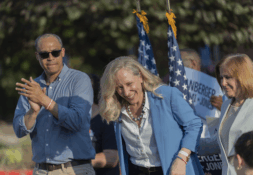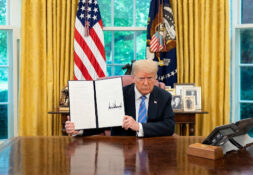Students express cautious optimism
The U.S.-brokered ceasefire between Israel and Hamas, implemented October 9 under a 20 point White House peace plan, resumed last Wednesday morning. The brief hiatus came after Israel conducted overnight airstrikes in Gaza that killed 104 Palestinians, according to the Hamas-run Gaza Health Ministry. The action was ostensibly provoked by Hamas’s failure to return the remains of all deceased Israeli hostages by an October 13 deadline and the killing of two Israeli soldiers in Rafah.
Israeli Prime Minister Benjamin Netanyahu ordered the operation Tuesday night, describing it as “immediate and powerful” in response to what the Israel Defense Forces (IDF) called a “clear violation” of the truce. Military officials accused Hamas of staging the recovery of a hostage’s body in front of Red Cross observers; drone footage released by the IDF showed militants placing a body bag at a designated handover site. Subsequent DNA testing confirmed the remains did not belong to any of the 13 hostages still unaccounted for from the October 7, 2023 attack.
Hamas denied orchestrating the soldier’s death and condemned the Israeli strikes as a “criminal escalation.” The group said it postponed a scheduled body handover October 26 due to Israel’s “ongoing violations.”
President Donald Trump, whose administration mediated the deal, commented in a press interview on Wednesday: “Nothing is going to jeopardize the ceasefire. Hamas tried to fake a hostage return, failed. Israel hit back. Now: all bodies returned, or no more games. 20 point plan moving forward.” Posting on Truth Social early Wednesday, he wrote: “Phase 1 complete. Phase 2 starts when final remains are home. Peace through strength.”
The 20 point framework envisions three withdrawal phases (53 percent, 40 percent, 15 percent of Gaza under Israeli control), full hostage and prisoner exchanges, demilitarization, and eventual Palestinian Authority governance. Phase Two begins upon the return of all deceased hostages. Reconstruction funding, estimated by the World Bank at over 50 billion dollars, remains under discussion with international partners.
Despite the violence, implementation of the peace plan continues. The IDF completed its first-phase withdrawal to 53 percent of Gaza territory on October 10, with concrete markers installed every 200 meters along the new line. Aid delivery, briefly reduced to 400 trucks per day after the missed deadline, is expected to return to the agreed 600 truck target.
Senior Trump administration officials have made repeated visits to Israel to stabilize the agreement. Vice President J.D. Vance traveled to the region on October 22 and inaugurated a U.S.-operated Civil-Military Coordination Center near the Rafah crossing to monitor compliance and facilitate aid. Jared Kushner and U.S. Middle East Envoy Steve Witkoff arrived Monday for talks with Netanyahu and Defense Minister Yoav Gallant. Secretary of State Marco Rubio landed Wednesday to meet with Israeli leaders and reiterate U.S. opposition to a Knesset vote favoring West Bank annexation, which passed October 22 but was condemned by the White House as a “provocation.”
Campus views were varied, but students broadly supported the peace plan overall.
A Stanford Hall junior, reflecting on the fragile state of negotiations in the region, told the Rover, “The ceasefire only works if both sides follow through. Faking a hostage return justifies a response, because it shows there was never a real intent to cooperate in the first place. You can’t build trust when one side manipulates something as sensitive as the return of hostages. Every time that happens, it pushes peace further out of reach and makes civilians on both sides pay the price.”
Duncan Hall sophomore Hayden Stokes, who has closely followed international coverage of the ongoing conflict, held a different view. “One-hundred and four people dead in one night over a delayed body handover is disproportionate,” he said. “The plan can’t survive endless retaliation.”
An off-campus senior, who said he has been tracking developments since last month’s escalation, expressed cautious optimism. “Trump’s team is here, the plan is moving, let the diplomats do their job,” he told the Rover. He agreed with the Vice President, who said in an interview, “The ceasefire is holding. That doesn’t mean that there aren’t going to be little skirmishes.”
In his October 13 speech, Trump stated that he and his administration are working to “end an age of terror of death and move into an age of faith, hope, and God.”
Luke Woodyard is a sophomore from Evansville, Indiana majoring in economics and theology. He can be reached at lwoodyar@nd.edu.
Photo Credit: The Samohi
Subscribe to the Irish Rover here.
Donate to the Irish Rover here.





